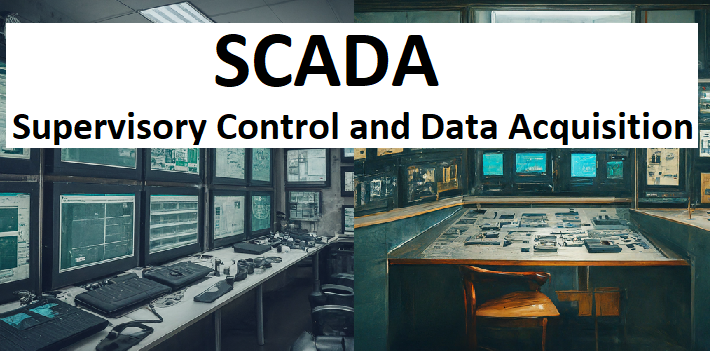SCADA: A Comprehensive Guide – SCADA (Supervisory Control and Data Acquisition) is a system used to monitor and control industrial processes in real-time. It’s essential for industries like power generation, water treatment, and manufacturing. Learn about its components, benefits, and applications.

Definition & Full Form
Supervisory Control and Data Acquisition (SCADA) is a system used to monitor and control industrial processes in real-time. It’s a critical component of modern automation systems, enabling operators to oversee complex operations efficiently and effectively.
Core Components of a SCADA System
- Remote Terminal Units (RTUs): These are devices located at the field level, collecting data from sensors and other field equipment.
- Supervisory Control Center (SCC): This is the central location where operators monitor and control the process.
- Communication Network: This network connects the RTUs to the SCC, allowing for data transmission and control commands.
- Human-Machine Interface (HMI): This is the graphical user interface that operators use to interact with the SCADA system, visualizing data and issuing commands.
- Database: This stores historical and real-time data for analysis and reporting.
Key Functions of a SCADA System
- Data Acquisition: Collecting data from sensors, actuators, and other field devices.
- Data Processing: Analyzing and processing data to identify trends, anomalies, and potential issues.
- Data Visualization: Presenting data in a clear and understandable format, often using graphical displays.
- Control: Sending commands to actuators and other field devices to control the process.
- Alarm Management: Generating alarms to alert operators of critical events or abnormal conditions.
- Reporting: Generating reports on process performance, historical data, and other relevant information.
SCADA Applications
SCADA systems are used in a wide range of industries, including:
- Power Generation: Monitoring and controlling power plants, including hydroelectric, thermal, and nuclear plants.
- Water Treatment: Overseeing water treatment facilities to ensure safe and clean water distribution.
- Oil and Gas: Managing pipelines, refineries, and other oil and gas infrastructure.
- Manufacturing: Controlling production processes, monitoring equipment performance, and ensuring quality control.
- Transportation: Managing transportation systems, such as railways, traffic control, and airport operations.
- Building Automation: Controlling HVAC systems, lighting, and security systems in buildings.
Benefits of SCADA Systems
- Improved Efficiency: Optimizing operations, reducing downtime, and increasing productivity.
- Enhanced Safety: Identifying and mitigating potential hazards, ensuring a safer working environment.
- Cost Reduction: Lowering operational costs through energy efficiency, reduced waste, and improved maintenance.
- Real-Time Monitoring: Providing operators with a comprehensive view of the process, enabling timely decision-making.
- Compliance: Ensuring compliance with industry regulations and standards.
SCADA Trends
- Internet of Things (IoT): Integrating IoT devices to collect data from a wider range of sources.
- Cloud Computing: Deploying SCADA systems in the cloud for improved scalability and flexibility.
- Cybersecurity: Implementing robust security measures to protect SCADA systems from cyber threats.
- Artificial Intelligence (AI): Utilizing AI for predictive maintenance, anomaly detection, and optimization.
As technology continues to advance, SCADA systems are becoming more sophisticated and integrated with other technologies. This enables them to play an even more critical role in modern industrial automation.
Home | Join us on Facebook, Twitter, YouTube, Instagram, Quora, Reddit, LinkedIn, Pintereset, Blogger.